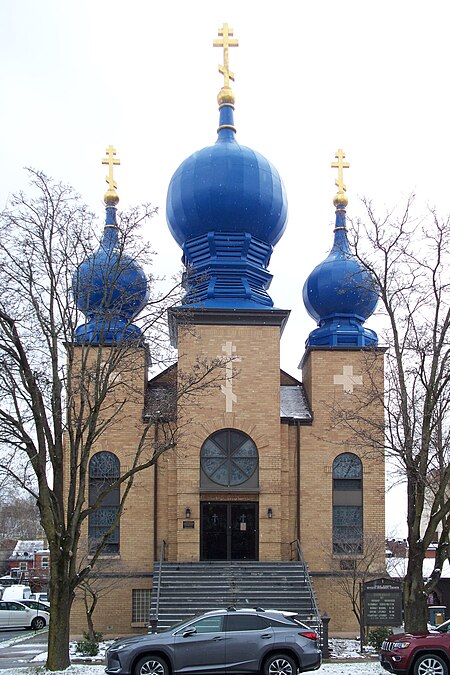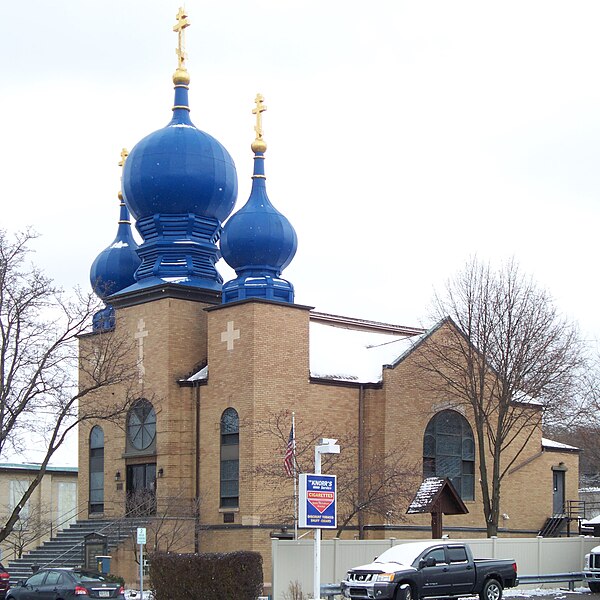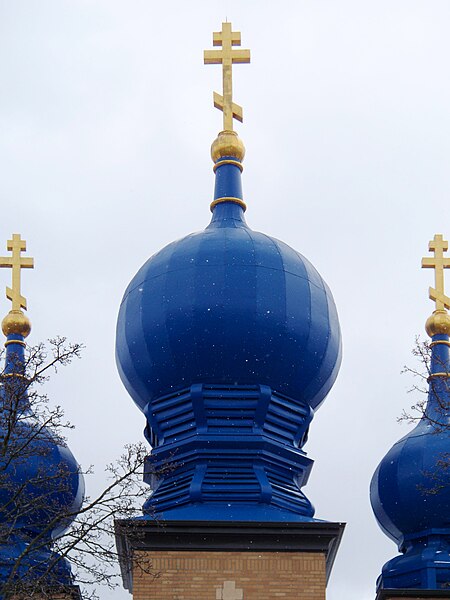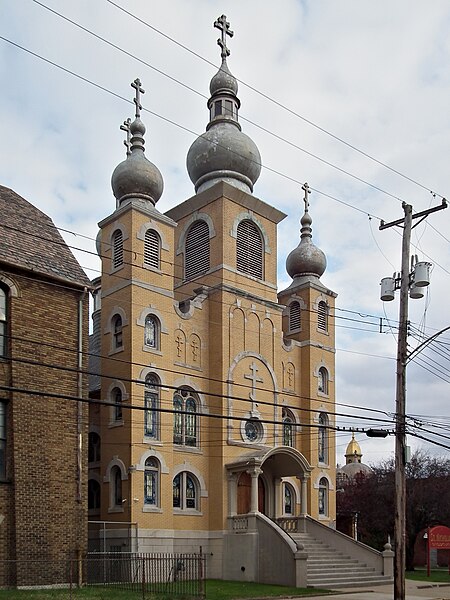
These deep-blue onion domes are one of the distinctive features of the Carnegie skyline as motorists see it from the Parkway West. This Russian church, originally known in English as St. Mary’s (according to the cornerstone), sits right next to the Ukrainian Orthodox church by Titus de Bobula; it was built in 1920, about fourteen years after the Ukrainian church. Though Holy Virgin is not so extravagantly eccentric, it holds up well against its neighbor; and the two of them together form a memorable composition that makes us wonder for a moment what continent we landed on.













